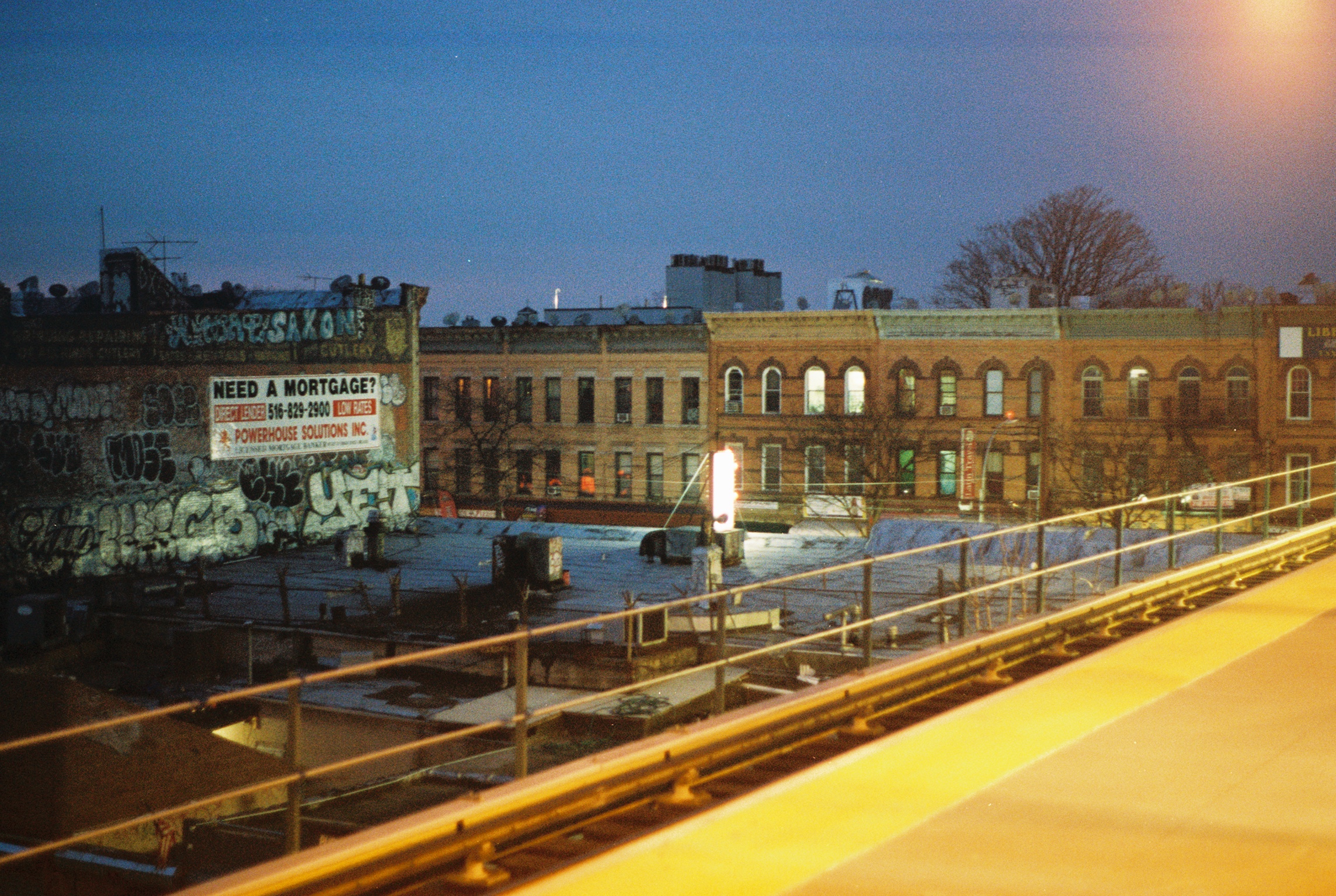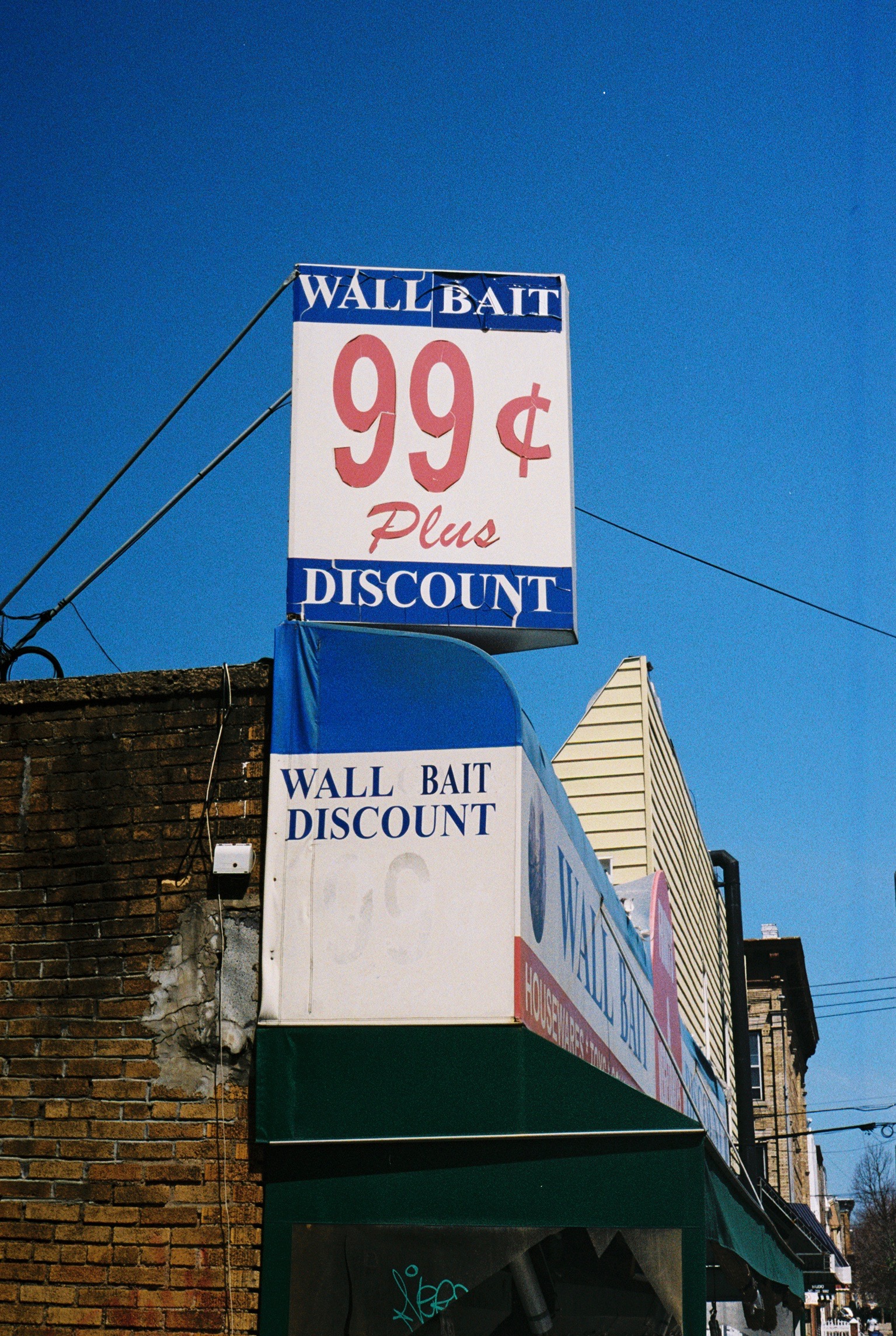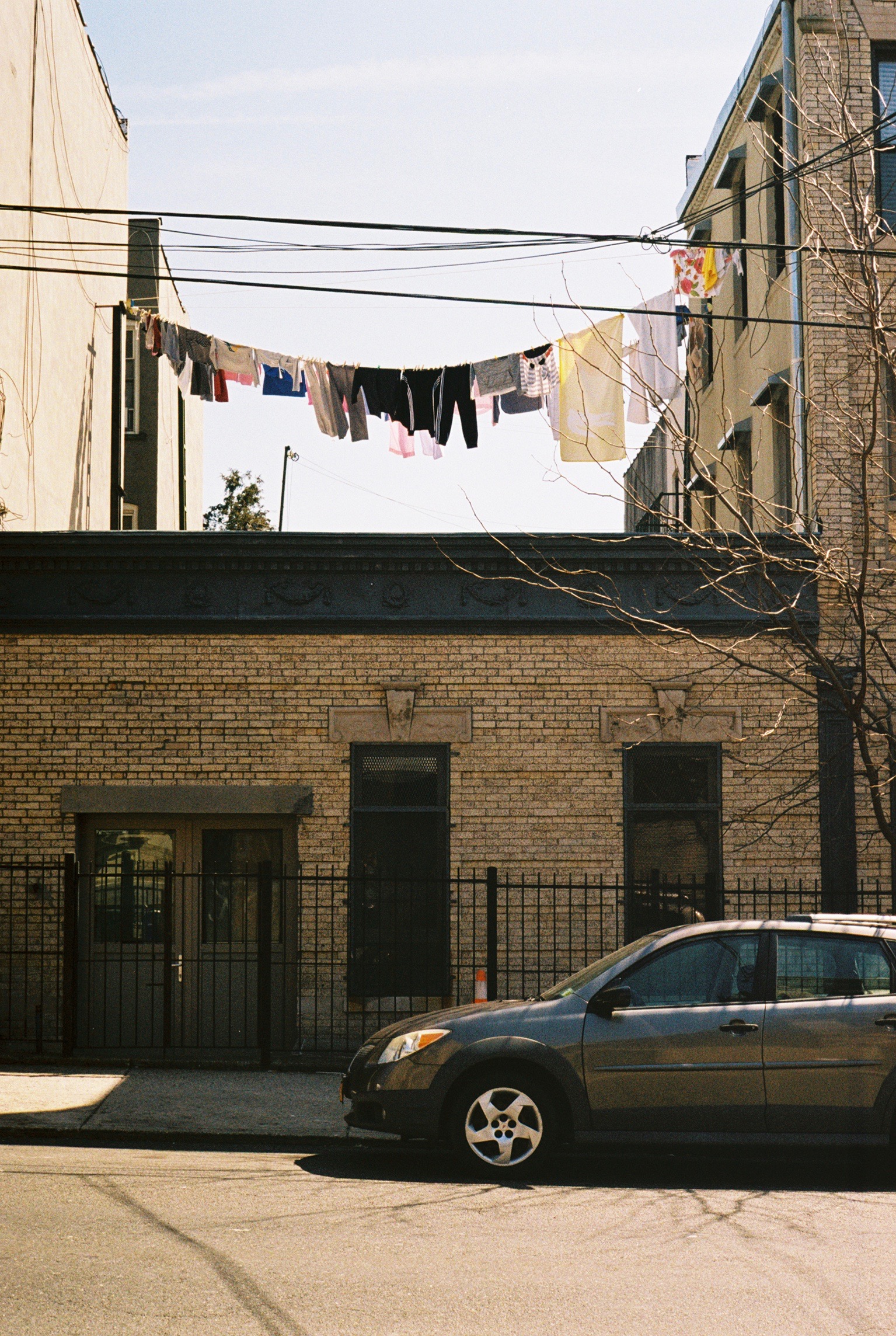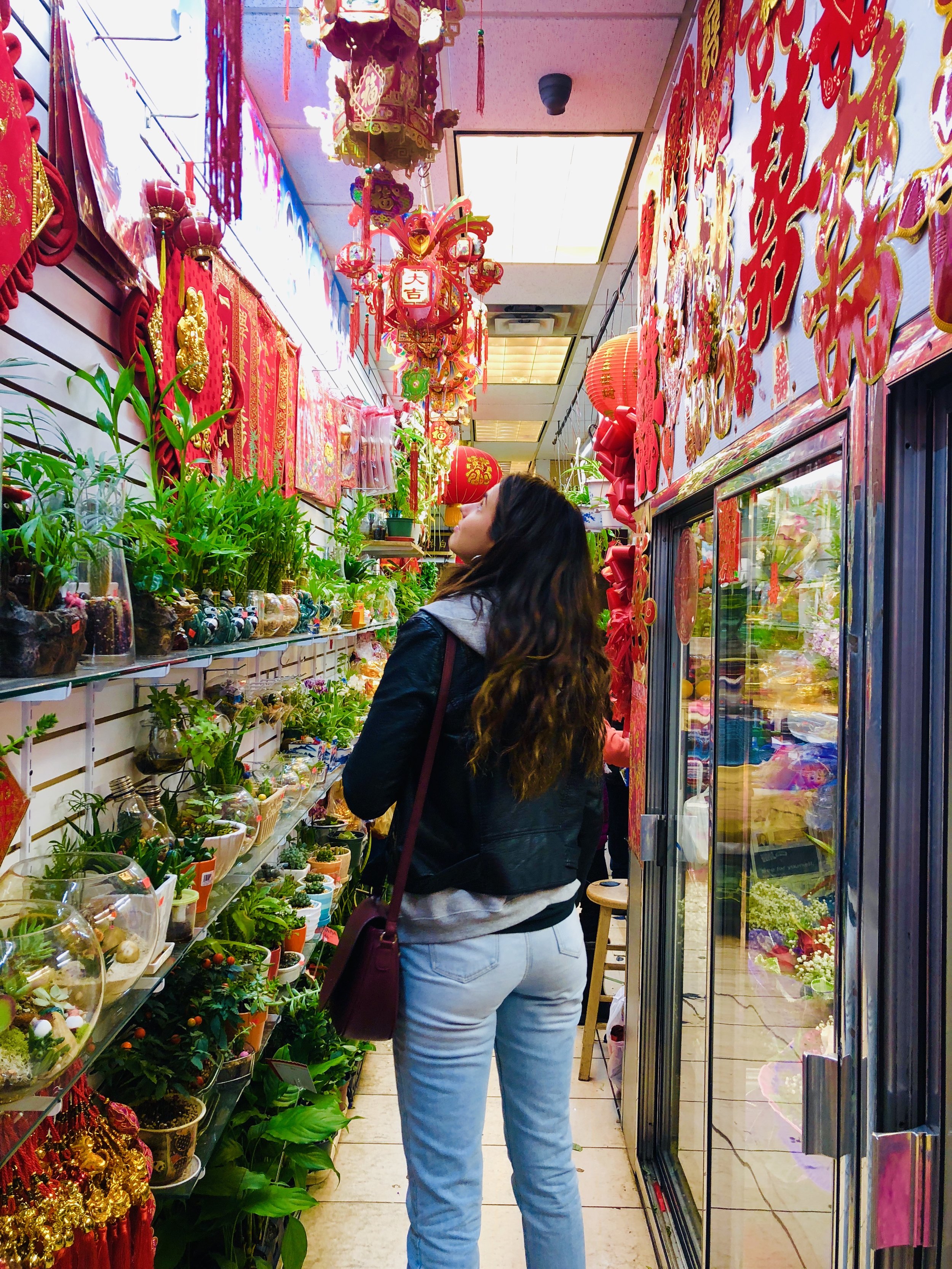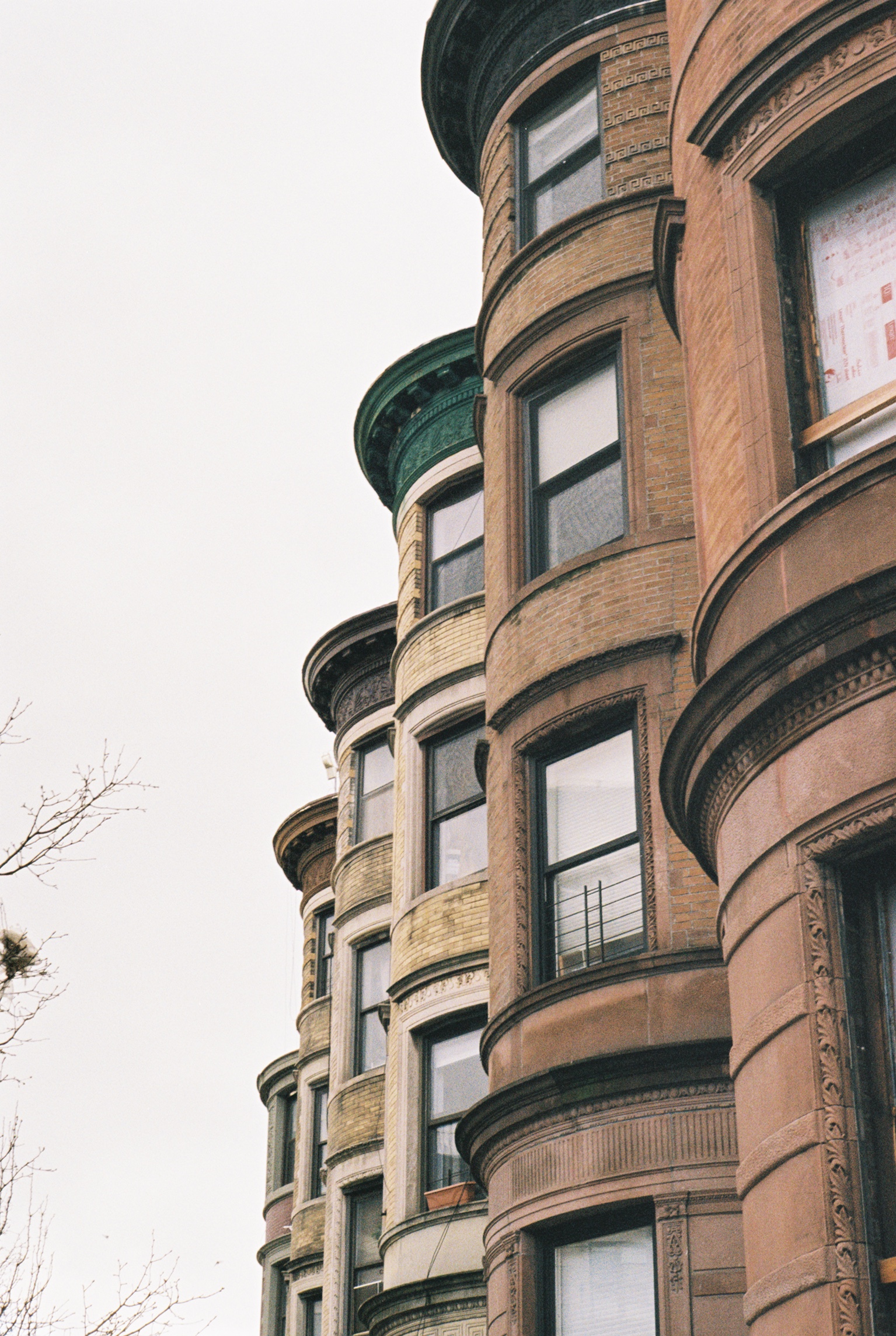RIDGEWOOD
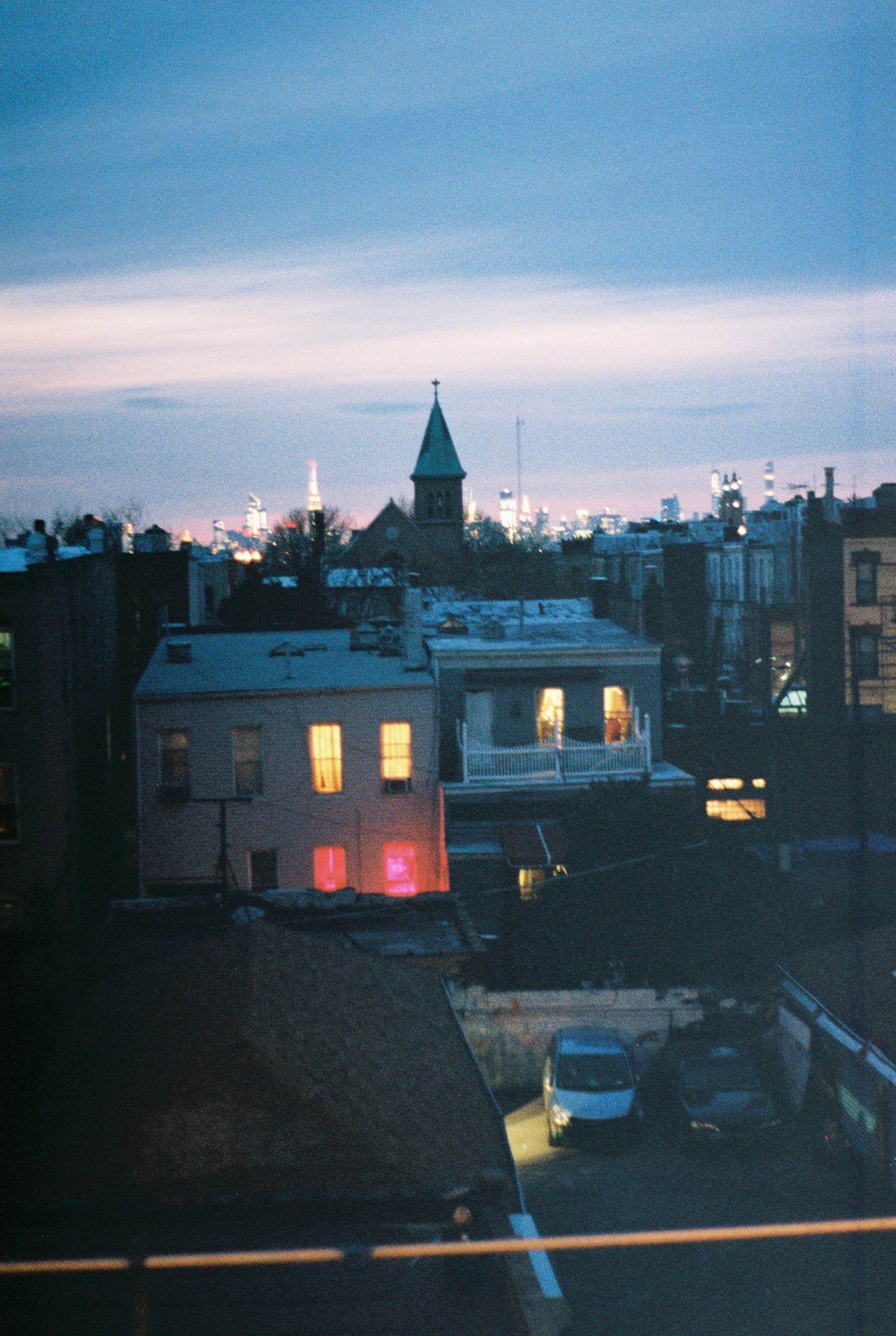
I’ll start with this.
Never before have I failed so miserably in putting together material for an article. I almost considered not writing this one all-together.
Ridgewood, Queens. Kodak Portra 800. Pentax K1000. Fletcher Berryman 2019.
One resident’s views on the now-cancelled Amazon HQ2 in Queens, expressed plainly. Ridgewood, Queens. Kodak Portra 800. Pentax K1000. Fletcher Berryman 2019.
I’ve been writing for awhile now, both for this site and farther back still, and generally consider myself mediocre but nonetheless diligent. After taking a break from the weekly posts to go to India for three weeks and another week off to adjust, I thought I’d jump right back into things. Yet somehow the musty, ancient air of Delhi and Mumbai seeped into my spinal column, crept up my neck and caked my already unreliable, self-destructed brain.
So let me just do away with the suspense here: this article is about Ridgewood, Queens (side note, I’m sick of suspense right now. As I’m writing this, the final Game of Thrones is waiting to drop and I’m still butt-hurt that I dropped off in Season Five after deciding that I’d move to the Colombian rainforest to “find myself”...).
Initially, my goal had been to examine the emotions of local residents around the problem of people (mostly white people) moving to the Outer Boroughs and, whether intentionally or not, gentrifying said neighborhoods.
People like, well, me.
It’s undeniable that there is an impact when anyone moves anywhere from somewhere else, let alone when that “somewhere else” is the other side of the continent (California in my case, with an accidental decade-long pee break off the side of the road in Colorado). The main questions I had “prepared” were “how does this make you feel?” and “what can I do as a newcomer to make it better now that I’m already here?”.
I had what I silently reassured myself was a humble (pro tip: if you’re having to reassure yourself your behavior or decision-making falls within the bounds of humility, you’ve likely already breached them) plan to interview a lifelong resident, capture the sentiments of the native New Yorkers and do my best to spread their message, whatever it be, back to my readers. I tracked down Angely Mercado after having enjoyed her article “People Come to New York for their Dreams, But I’m Trying To GTFO”. Her and I exchanged emails, she agreed to do an interview about growing up in Ridgewood and what it’s like to have a bunch of white folks moving in wearing Birkenstocks who think they’re unique for dressing like a lumberjack when they’d likely end up maxing out their deductible if they ever tried to chop wood, let alone venture outside of self-imposed five mile radii around Brooklyn’s matcha tea stands (can’t wait to see what the next “health trend” is, though something tells me it’ll involve cold pressed manure).
The interview was a smash hit. Angely proved even more interesting and insightful than a writer could ever ask for.
Sounds like everyone is going according to plan, right?
Wrong.
Here is a list of all of the dumb shit I did that nearly sunk this article:
1. Recorded Angely on my iPhone using no proper mic...outside...in goddamn Queens. There were helicopters, boomboxes, traffic of every kind and background conversation from the many other folks in the park that day. Needless to say, the recording is now entirely unintelligible and worthless, just like me.
2. Forgot to take Angely’s photo. Now this one might be even worse. How the hell do you forget to take the photo of the person you’re interviewing? I wish I could tell you but, well, I’m that person. It’s worth mentioning that in case you were kind enough to afford me the possibility that I forgot to bring the camera, it was wrapped around my neck the whole time so, yeah….
3. Decided that meeting in late winter around 7:30pm would somehow not involve total darkness despite the fact that the Sun has set at the same time on the same days of the year for approximately forever.
It was pitch black half-way through the interview. Luckily, I had some 800 ISO film in my bag that I forgot about so I got some interesting shots, coupled with me holding as steady as possible with a slow shutter speed on the other 400 ISO roll (not surprisingly, most of the latter exposures turned out awful but I got a couple gems).
4. Thought it’d be completely chill to just go away for a month and spontaneously pull every minute detail of my time in Ridgewood from my permanently damaged brain more than a month later.
5. I don’t know what five is but I’m convinced that I messed up in more than four ways so I’m putting it here as a place-marker for forthcoming hindsight.
So here we are. No audio from an incredible 45 minute conversation with Angely. Mostly underexposed and/or blurry photos. Shotty memory of my time out there, at best.
And you know what?
I’m gonna write the damn thing anyways.
So here it is.
RIDGEWOOD,
QUEENS.
CITY OF NEW YORK.
First off, why Ridgewood?
Great question and one with a compelling backstory. The overarching narrative of gentrification and intra-city migration for New York is this:
“People are moving to Brooklyn and have been for some time”.
Shoot, even people in rural Nebraska have likely encountered some news clip addressing this mini-diaspora by now (although “mini” is also inaccurate, as more people move across the East River every morning than the population of most American cities). Everyone, at some level, knows that people have been leaving Manhattan for years now, largely due to high rent.
This is true. 100%.
But there’s far more to it than that (and it should be stressed that people don’t move to Brooklyn, or The Bronx or Queens or Staten Island for that matter, because they “have no choice”. It’s safe to say that many if not most, including myself, far prefer the Outer Boroughs to Manhattan anyways).
Ultimately, it is the subway lines that define where people expand outward from Manhattan and into the other boroughs. In fact, every subway line in New York comes into the City at some point (except the G, which runs roughly North-South from Queens to Brooklyn and is the best train because it’s my train. In case you’re a prospective stalker, I live about 950 ft from the Classon Ave G stop on the border of Clinton Hill and Bed-Stuy, come at me).
Most of them have experienced gentrification along their lengths. But one train in particular has seen it on a whole other level.
That train, is the L.
The L runs from Brooklyn under the East River and into Manhattan along 14th St. Why does this matter? Because 14th St runs through the heart of Lower Manhattan. Tons, and tons, and TONS of jobs are located either along it or can be reached by connecting through some of the stations the L shoots through, especially 14th St / Union Square. It’s fast, too. If you live in Williamsburg you can be in the City in 15 minutes or less (depending on where you live in Williamsburg). Now, barring conversation on the ongoing L Project, it’s an incredibly powerful and important connection between Brooklyn and Manhattan, with over 500,000 people taking it daily each way. The very, very short summary of how the whole “moving to Brooklyn” thing came to be is this (this is intentionally simplistic and lacking):
Manhattan gets super expensive as neighborhoods in Lower Manhattan go from dangerous to safe and desirable.
The creative class of Manhattan seeks refuge from high rents, and many move to Williamsburg for cheap housing and quick access to their former haunts in the City like the East Village, Greenwich Village and Lower East Side.
Williamsburg becomes “cool” and more and more people move there.
Williamsburg goes from “under the radar” to “bougie” and even “posh” so struggling artist types move deeper along the L to Bushwick.
Over time the pattens repeats itself and even Bushwick becomes expensive.
Those who can’t afford Bushwick move farther still and start snatching up places in Ridgewood, just over the Brooklyn-Queens border into Queens, along the L and the J/M/Z train.
Looking out from the M Train near the Brooklyn/Queens border. Kodak Portra 800. Pentax K1000. Fletcher Berryman 2019.
The Seneca Station on the M Train. Ridgewood, Queens. Kodak Portra 800. Pentax K1000. Fletcher Berryman 2019.
Ridgewood, Queens. Kodak Portra 800. Pentax K1000. Fletcher Berryman 2019.
Ridgewood, Queens. Kodak Portra 800. Pentax K1000. Fletcher Berryman 2019.
Ridgewood, Queens. Kodak Portra 800. Pentax K1000. Fletcher Berryman 2019.
Which brings us to where we are now. Newcomers see Ridgewood as a Brooklyn annex.
Locals, like Angely, see it as anything but.
If you can remember one thing from this article, remember this:
Ridgewood is in Queens, not Brooklyn.
Ridgewood is Latino. It’s blue collar. It’s rough around the edges in spots. But it’s not Bushwick grungy-in-a-cool-way. It’s not somewhere people move to so that they can call back their friends in their small Iowan hometown to let them know that they shaved their head and are super edgy now because they dress like the early Puritan settlers who found their way to the same swaths of swampy land four hundred years prior.
Ridgewood, Queens. Kodak Portra 800. Pentax K1000. Fletcher Berryman 2019.
Ridgewood, Queens. Kodak Portra 800. Pentax K1000. Fletcher Berryman 2019.
Ridgewood, Queens. Kodak Portra 800. Pentax K1000. Fletcher Berryman 2019.
Ridgewood, Queens. Kodak Portra 800. Pentax K1000. Fletcher Berryman 2019.
A makeshift memorial to a passed-on resident. Ridgewood, Queens. Kodak Portra 800. Pentax K1000. Fletcher Berryman 2019.
Nope, it’s none of that. Ridgewood isn’t mortgage-paymeny-priced coffees or goat yoga. Ridgewood isn’t vegan soft serve or any of this crap (I implore you to take the tangential leap of clicking this link). Ridgewood just Is. It seeks no identify but it’s own. It’s a simple and proud neighborhood of row homes and the occasional brownstone, criss-crossed by overhead train lines. The air is full of spices, of meat cooking, of dated merengue and salsa music reverberating from the blown-out speakers of boom boxes the same age as I am.
It is, one could say, a true New York neighborhood.
Now granted, the invasion described above is indeed entering into Ridgewood. But Ridgewood, at least for now, has evaded a full takeover. Like landlocked Switzerland, it’s territory lies deep within the amalgamated landmasses that we call Nueva York.
So what’s different about it, what makes it special? I think, if I can say this, it’s its ordinary-ness, it’s nothing-special-ness, that makes Ridgewood so special. New York’s ever-changing patchwork of neighborhoods reverberates across its grids century after century, dissolving formerly famed neighborhoods like Five Points and Weeksville. Neighborhoods change hands, people like myself move in and everything goes to shit. Ridgewood is such a special place, in my mind, because it’s decidedly normal. Zero tourists, zero sights, no particularly notable parks. I’ve made this point in articles prior when describing other neighboorhoods, such as Highbridge in The Bronx, and for some odd reason I feel that Ridgewood stands king among the likeable ordinary neighborhoods. The food is fantastic, the la cultura latina is pura and the people there have been there forever.
I hope in my heart,
en el corazón,
that it stays that way.
I love the place.





